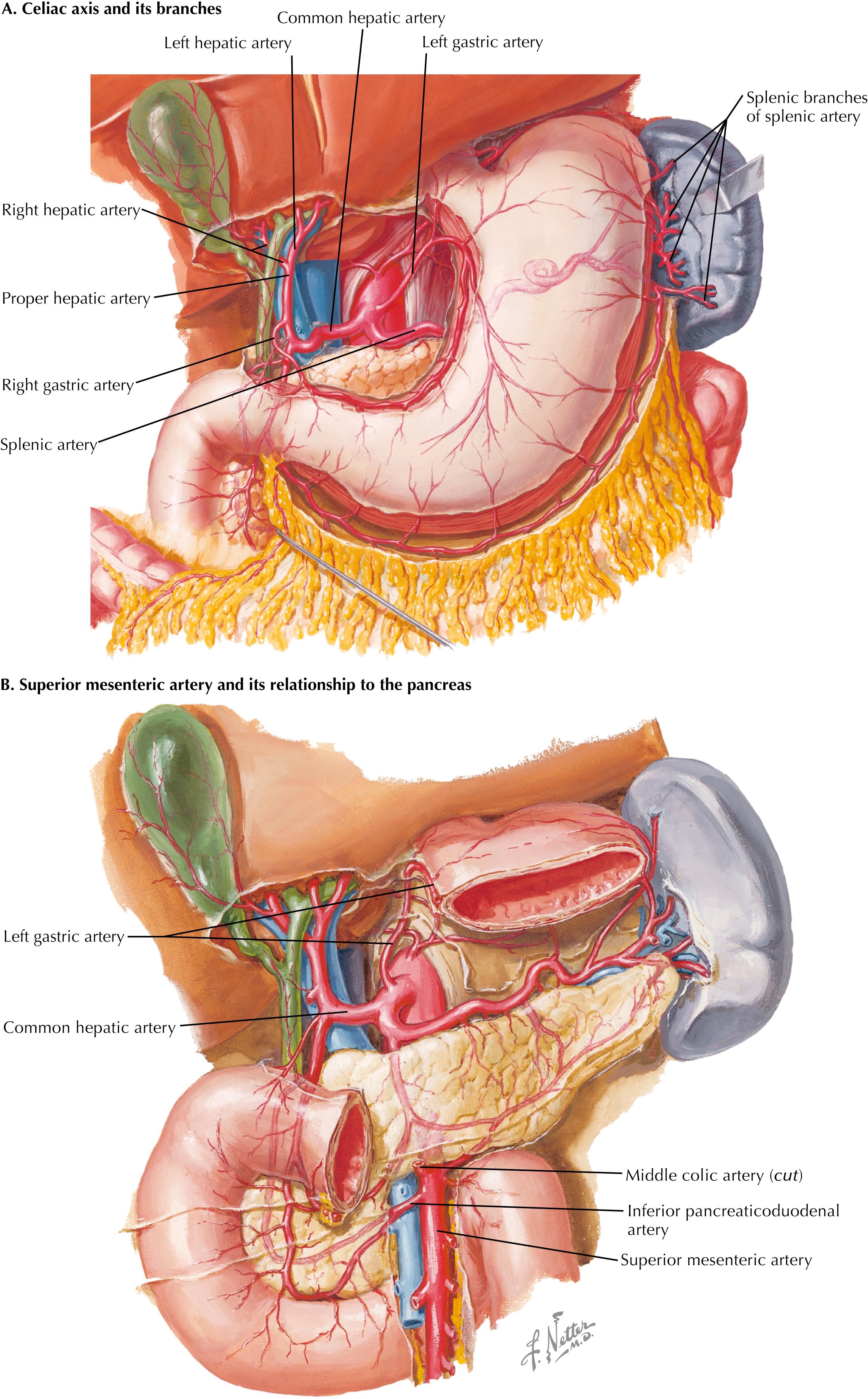Physical Address
304 North Cardinal St.
Dorchester Center, MA 02124
Mesenteric ischemia can be an acute or chronic process. Acute mesenteric ischemia is caused by embolism or thrombosis of one or more mesenteric blood vessels. Embolism is generally a result of a recent cardiac event or arrhythmia. Acute mesenteric ischemia patients have elevated lactic acid and often “pain out of proportion” to the physical exam. Urgent angiographic imaging should reveal filling defects in one or more mesenteric vessels. Additional findings on axial imaging may reveal stigmata of bowel ischemia (e.g., bowel wall thickening, mesenteric edema, or pneumatosis). Patients with thrombotic or occlusive disease tend to have prodromal symptoms such as postprandial abdominal pain before their acute presentation.
Chronic mesenteric ischemia is a result of advanced mesenteric vessel atherosclerosis. Patients have comorbidities consistent with peripheral arterial disease. Classic symptoms include postprandial abdominal pain, weight loss, and food fear. In most cases, two of the three mesenteric vessels must be involved for symptoms to occur. Duplex ultrasound and arteriographic findings of severe ostial stenosis confirm the diagnosis. Symptomatic patients with occlusive disease of at least two of the three mesenteric vessels (celiac axis, superior, and inferior mesenteric arteries) are often considered for revascularization.
The mesenteric vessels of the visceral aorta include the celiac axis, superior, and inferior mesenteric arteries. The celiac axis is a short common arterial trunk that originates on the anterior surface of the abdominal aorta as it passes through the diaphragmatic crura at the 12th thoracic vertebra (T12). Most commonly within 2 cm of its origin the celiac divides into the left gastric, splenic, and common hepatic arteries ( Fig. 44.1 ). These arterial branches and their tributaries supply the stomach, proximal duodenum, liver, spleen, and portions of the pancreas. Important for mesenteric revascularization is the common hepatic artery. The common hepatic artery traverses the gastrohepatic ligament toward the portal triad and may be used as a target vessel in revascularization procedures.

The superior mesenteric artery (SMA) arises approximately 1 cm distal to the celiac axis on the anterior surface of the aorta at the first lumbar vertebra (L1) (see Fig. 44.1 ). The SMA is the dominant blood supply to the distal duodenum, small bowel, and ascending and transverse colon. The SMA has a robust collateral network to both the celiac axis and the inferior mesenteric artery (IMA). The celiac communicates with the SMA via the pancreaticoduodenal arcades and with the IMA via the marginal artery of Drummond. The SMA’s intimate relationship with the pancreas also deserves mention. The SMA travels behind the neck of the pancreas, medial to the superior mesenteric vein, but then traverses the uncinate process and third portion of the duodenum in an anterior position. Finally, an important landmark for identification of the SMA during surgical exposure is the middle colic artery, which is the first major branch of the infrapancreatic SMA and may be traced to its origin to identify the SMA.
Become a Clinical Tree membership for Full access and enjoy Unlimited articles
If you are a member. Log in here